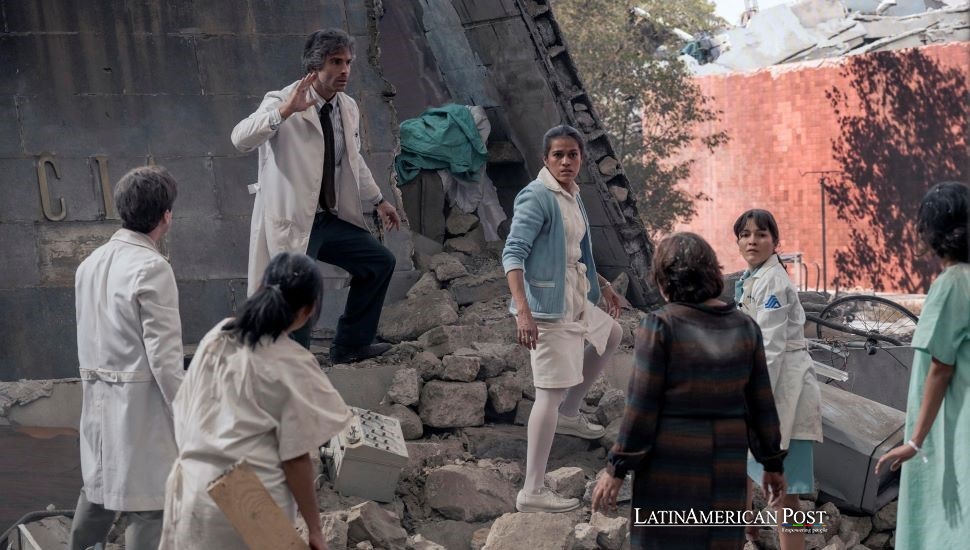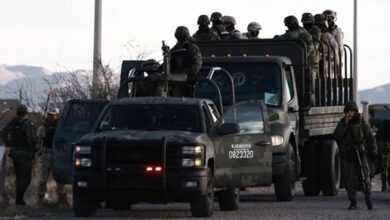New Tech Brings Mexico’s 1985 Earthquake Stories to Life

Cada Minuto Cuenta, a new series depicting real stories from Mexico City’s devastating 1985 earthquake, leverages groundbreaking virtual production technology to enhance realism. The series, debuting on Prime Video in November, revisits forgotten stories with emotional depth and cutting-edge visuals.
Virtual Production: A Game-Changer for Mexican Cinema
The upcoming series Cada Minuto Cuenta, directed by Jorge Michel Grau, explores untold stories of survival, courage, and solidarity during Mexico City’s tragic 1985 earthquake. What sets this series apart isn’t only its powerful narrative but the revolutionary technology used to bring it to life. For the first time in Mexican cinema, the production incorporates advanced virtual production technology, blending real-time footage with computer-generated graphics to create scenes of unparalleled realism.
This virtual production technology, which has gained traction in Hollywood, transforms traditional filmmaking by creating expansive, interactive virtual sets displayed on massive LED screens. Actors perform against these lifelike digital backdrops, eliminating the need for green screens and post-production effects. For Cada Minuto Cuenta, this technique allowed the team to recreate the destruction and chaos of the earthquake in meticulous detail while preserving the emotional immediacy of the actors’ performances.
Lead actress Maya Zapata, who plays a journalist reporting live from the earthquake’s aftermath, described her excitement and awe at experiencing this technology firsthand. “Arriving on set, you see these massive LED screens and concrete-like blocks, mimicking real debris—it’s something no one has experienced here before,” Zapata shared with EFE. Virtual production allows directors like Grau to push creative boundaries, offering a realism level that Mexican audiences rarely see in their local cinema.
A Realistic Look at Heroism in Crisis
At the heart of Cada Minuto Cuenta are characters based on real people who faced extraordinary circumstances during the earthquake. The cast, including Osvaldo Benavides as a hospital doctor and Jesús Zavala and Antonio de la Vega in pivotal roles, spent weeks in physically demanding environments to capture the brutal reality of the disaster. As Benavides reflected, “We were covered in dust, sweating, and buried in rubble throughout filming. This level of production quality is unlike anything Latin America has seen before.”
For the actors, embodying these roles meant more than simply portraying a part—it required physical endurance and an emotional connection to the historical events. Zapata said the series offered a “powerful story that many will relate to personally.” The immersion enabled by the virtual production setup made the actors feel they relived the quake’s horrors, adding authenticity to their portrayals.
Antonio de la Vega highlighted the series’ commitment to historical accuracy. Grau and his team were determined to present the stories respectfully and accurately, drawing on the expertise of Iván Salcido, known as “the chronicler of the earthquake,” who served as a consultant. “We’re portraying what really happened, staying true to the events, because this series is a homage. It may reopen old wounds, but honoring these memories is long overdue after nearly 40 years,” de la Vega explained. The respect for the subject matter and high production values make Cada Minuto Cuenta a new milestone for Latin American storytelling.
Finding the Untold Stories Through Technology
One of the series’ goals was to bring lesser-known stories to the forefront, sharing the experiences of ordinary people who showed extraordinary bravery. Director Jorge Michel Grau explained that the eight-year documentation process was essential for uncovering these overlooked narratives. “The earthquake lives in our collective memory; everyone has their stories, but many remain untold. Those are the ones we wanted to amplify,” Grau noted.
Thanks to virtual production, Grau could recreate specific settings and environments from 1985 that would have been impossible to film using conventional methods. From crumbling buildings to overcrowded hospitals, the technology enabled the team to portray the extent of the destruction with unprecedented fidelity while still allowing for real-time adjustments. This flexibility was vital for capturing the chaos and urgency of the event.
For audiences, this means seeing Mexico City as it looked and felt during the earthquake’s aftermath, enhancing their emotional connection to the stories on screen. The series presents a vivid tapestry of human resilience, shedding light on stories that resonate with anyone familiar with the seismic tragedy. By leveraging virtual production, Grau and his team have preserved the earthquake’s historical context while making it accessible to new generations of viewers.
Revolutionizing Latin American Storytelling
Cada Minuto Cuenta could mark a turning point for Latin American media, where high-quality technology-driven storytelling remains a rarity due to budget constraints and limited access to the latest innovations. As Prime Video prepares to release the series on November 8, it sets a new standard for Latin American productions by demonstrating how technology can enhance narrative and visual impact.
Virtual production allows Latin American filmmakers to explore complex subjects and reach global audiences with stories that resonate far beyond the region. With the success of Cada Minuto Cuenta, Mexican cinema may enter a new era, inspiring more productions that harness technology to tell culturally significant stories. In Zapata’s words, “This series is a tribute not only to those who lived through the earthquake but to Latin American cinema itself. It shows the world what we’re capable of.”
Also read: Mexican Engineer’s Biomaterials Project Heads to Space, Making History
The use of virtual production technology in Latin American cinema elevates production quality and widens the scope of stories that can be told. In this case, it allowed the creators of Cada Minuto Cuenta to tell a story that honors history while pushing technical and creative boundaries. As the region’s film industry gains access to more advanced tools, filmmakers can further their commitment to authentic storytelling, inspiring a new wave of Latin American cinema.





